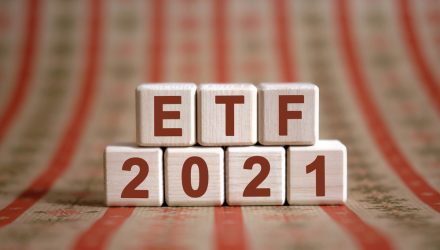In bygone investing eras, exchange traded funds were often blamed, usually erroneously, for various market meltdowns and crises.
Yet globally listed exchange traded products have topped $8 trillion in combined assets under management, indicating crises often beget opportunities for ETFs. The March 2020 coronavirus pandemic crisis proves as much, and there are multiple reasons why asset allocators often turn to ETFs in tough times.
“The first is really validation, and the second is opportunity. And when I say validation, I really mean validation of ETFs as a concept, as a structure, as a way of bundling different securities, different investment strategies and passing those back and forth between investors on the stock exchange,” says Morningstar’s Ben Johnson. “It’s a concept now that’s nearly three decades old in the United States but one that up until really the global financial crisis hadn’t been stress-tested in a meaningful way. If you fast forward from the global financial crisis to 2020 and the crisis period we went through early last year, what you saw is that the ETF industry had grown exponentially, that the amount of volume going through the system was really unprecedented.”
For Investors, the Mechanics Matter
ETFs have become a household name as more investors adopt the tax-efficient investment tools to access niche and broad market environments. However, many investors do not know how the relatively new investment vehicle actually works.
When it comes to interpreting an ETF’s true liquidity, it is important for investors to look below the surface. Some suggest that new ETFs always carry elevated risks based solely on lower average daily trading volume, but tends not to be the case. Newly issued ETFs can come with with deep liquidity, much of it unseen on a trading screen. Investors just have to take the time to look behind the curtains, so to speak.
An ETF’s true liquidity is more related to he liquidity of the underlying basket of securities.
If an ETF exhibits low average volume, it does not mean that it is difficult to trade. Due to its innate creation and redemption process, ETFs are able to create and redeem shares based on supply and demand through the help of Authorized Participants. These participants work with ETF issuers and market participants to help provide more efficient or seamless ETF trades.
Importantly, the ETF vehicle is dynamic and evolving, speaking to long-term viability, which has already been proven in volatile periods.
“I think the ETF marketplace over the past year has really just been a continuation of the ongoing evolution that we’ve seen now over the course of really decades,” adds Johnson. “What we’ve seen is that there is an ever-larger number of participants, an ever-larger number of investors that are using ETFs in new and in different ways. The ETF by its nature is a very dynamic vehicle being an exchange-listed and exchange-traded vehicle.”
For more news, information, and strategy, visit the ETF Education Channel.
The opinions and forecasts expressed herein are solely those of Tom Lydon, and may not actually come to pass. Information on this site should not be used or construed as an offer to sell, a solicitation of an offer to buy, or a recommendation for any product.








